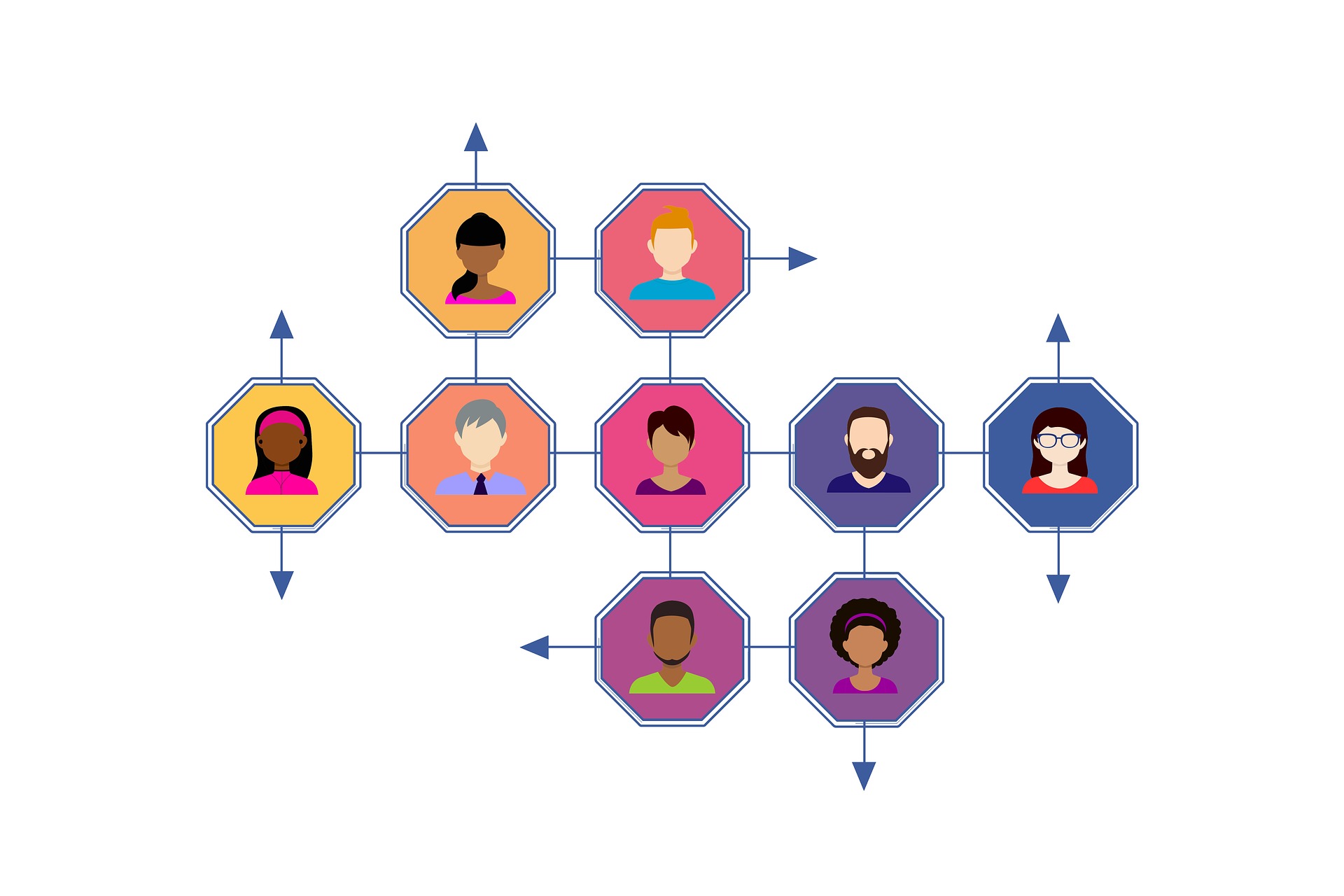You and I are emotional creatures. We like to think we make rational decisions based on logic and reason, but that is not the case. That is why a compelling business story is so important.
Michael Harris, who writes for the Harvard Business Review, says “The decision to buy is made subconsciously . . . Our subconscious/intuitive decision to buy is then communicated to the conscious mind via an emotion. The conscious mind then searches for rational reasons, and that’s how we complete the circle: We justify our emotional signals to buy with logical reasons.”
We buy on emotion and justify with logic
People buy because their gut tells them that your product or service can help them achieve their goal. Your story of why you’re in business resounds with them. They believe in you and your product. So, in creating the details of your story, you want to connect with your audience in an authentic, personal way that they can relate to.
For example, below is the story of GrubHub, which is an online and mobile food ordering company.
It was just another hungry late night at work, but Matt Maloney sensed an opportunity. The eureka moment for GrubHub came when Mike and I were working as developers for Apartments.com. We were frustrated by the lack of dinner options as well as the pain in the ass of calling restaurants and reading our credit cards. At the time, we were working on geographic lookup searches for rental real estate. That’s when I heard the screeching wheels in my head: Why wasn’t there something like this for food delivery?
Can you relate to working late, being tired, hungry and hating the hassle of trying to get food? I know I can. And many other people can too.
So how do you make a compelling story? Read on.
How to Construct Your Story
First: Define the Objective of the Story
What do you want your customer to feel and what action do you want them to take based on the story?
Stories can be how your customers overcame hurdles with your help or how they took advantage of an opportunity you provided.
In some cases, the story is self-explanatory as to next steps and in other cases, you will recommend a course of action. Often, if there are more than one person in the room, they will talk amongst themselves and determine the next course of action.
- Know your stories well enough that you can select the appropriate one to use in a given situation.
People won’t’ remember the five points of your PowerPoint presentation. But they will remember a good, applicable story. Invest time in creating powerful stories.
Second: The Story must have a Challenge (The Villain)
Just like any action/adventure film or any western, there is always a hero and a villain. Is this case, the villain is the challenge or obstacle that needs to be overcome. Without a villain, the story would be pretty boring, wouldn’t it? There needs to be tension in the story (will the hero save the day?)
Earlier we described the challenge faced by Matt and Mike of GrubHub which lead to the creation of the business. But you want to go beyond just YOUR story and gather stories of how you helped your customers achieve their goals.
For example, let’s say you are in the software consulting business. It is at the end of the year and a potential customer is stressed because their current e-commerce software is very slow and customers are leaving their online shopping carts without making a purchase. You work with this customer to optimize the software and it enables the customer to garner an additional $500K in sales because of your work by year-end.
In this case the slow software is the Villain or Challenge.
The Villain could also be a difficult customer and you were able to resolve the issues turning them into a very satisfied customer.
Third: Use Vivid language
In constructing a story, it is important to engage as many of the five senses (sight, touch, hear, taste, smell) as possible into the story.
If you were telling the story of how your business got started you would describe the time of year it took place, the sights and sounds as the inspiration of the business came to you.
What time of year did the story, take place? Was it Fall, with the leaving turning red and yellow? Or was it Spring, with tulips opening up to the sunshine? What were the smells? Were you on a walk in the summer and could smell the fresh cut grass? Did you on a whim take off your shoes, curled your toes in the soft carpet of grass, closed your eyes and then suddenly a flash of insight hit you like a ton of bricks?
What did you say to yourself when the business idea flooded your mind? What did you say to others when you told them your WHY, your Vision?
When you enable your potential customer to see, hear, smell, touch and taste your story it comes alive for them, putting them right in the middle of it.
Paint a vivid picture of WHY you wanted to start the business using powerful, descriptive language. Use language that creates a picture in the mind of your customer as you tell of your vision of how you want to make the world a better place through your business.
In the story above concerning the slow software, where I simply told the facts about the challenge and results, you would describe in detail how the customer felt and use dialogue to tell the story. You would describe the customer as “his shoulders were slumped, and he had a pained expression on his face as he described the software problems saying they were ‘like a noose around his neck’.”
To summarize, you want your potential customer to understand the story and act based on your objective.
How to get Good Stories?
Take a good customer out to lunch and write down in detail what his/her challenges were, when it took place, who was involved and the result from overcoming the challenge. Be as specific as possible.
As you become more successful you often won’t know of a situation where a customer successfully used your product, unless you talk to them.
Find out what action they took and how your product/service or you, played a role in overcoming the challenge. Find out what the result was and how the customer feels in achieving that result.
Provide Exceptional Service – Testimonials
When selling consulting services for my then current employer I used a success story of how my team consulted with a large wireless telecommunications customer and we enabled them to increase productivity 300% in their network operations. The vice-president of operations said, “You have enabled us to take a quantum leap in how we operate.” I captured his story in print and on video. I used that testimonial in marketing materials and in sales presentations for the services and increased sales by using them.
You don’t need to be Garrison Keillor (Prairie Home Companion) to tell a story
Final note, as time goes on you will have an entire repertoire of stories. You’ll get better at determining which one to use in a given situation and as you tell them, you will get better in your delivery. But don’t worry about being a master story teller. Your potential customer understands that you’re not a celebrity speaker. They just need to understand how you can help them and stories are the best way to tell them.
Actions:
- Use descriptive language to describe in detail the sights and sounds when you came upon your business idea.
- Paint a picture of your Vision in your customer’s mind using the descriptive language.
- Think of 3 stories where your customer had success by using your product or service. Have them in different industries and different genders and races.







 Dr. Russ Riendeau is a successful entrepreneur, national speaker and award-winning executive search professional. He has turned his ideas, passions and talents into million-dollar business with ideas that have enriched the lives of thousands, as well as a rewarding personal and professional life. Russ is also the creator of the Rusty & Pogo comic series. His ideas, writings and art work have appeared in thousands of media outlets including, TEDx Talks, The Wall Street Journal, Wall Street Journal Radio, ABC News, CNBC, MSNBC, CNN, Boston Globe, Artprize 2014, Sales & Marketing Magazine, Training Magazine and CIO Magazine.
Dr. Russ Riendeau is a successful entrepreneur, national speaker and award-winning executive search professional. He has turned his ideas, passions and talents into million-dollar business with ideas that have enriched the lives of thousands, as well as a rewarding personal and professional life. Russ is also the creator of the Rusty & Pogo comic series. His ideas, writings and art work have appeared in thousands of media outlets including, TEDx Talks, The Wall Street Journal, Wall Street Journal Radio, ABC News, CNBC, MSNBC, CNN, Boston Globe, Artprize 2014, Sales & Marketing Magazine, Training Magazine and CIO Magazine.


















